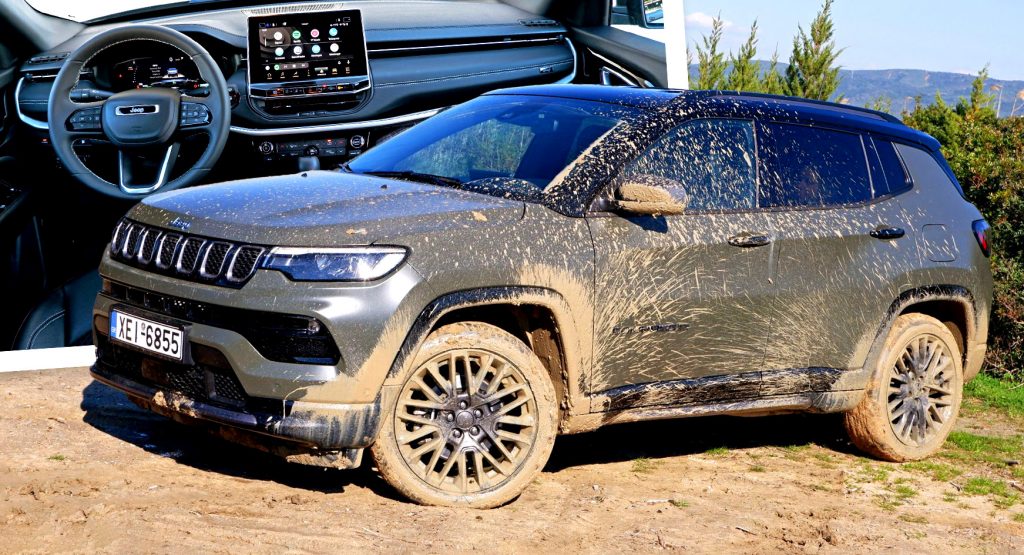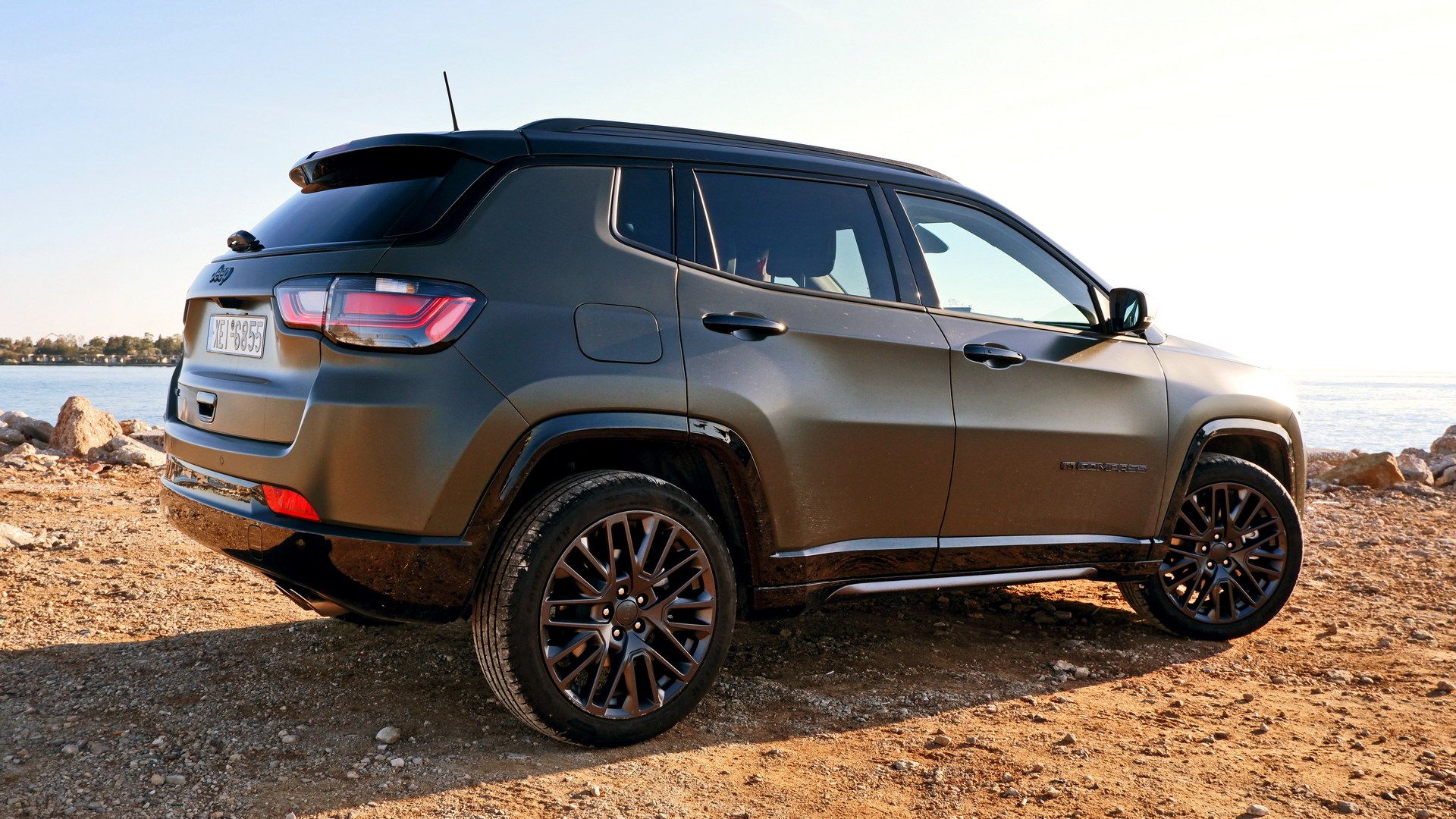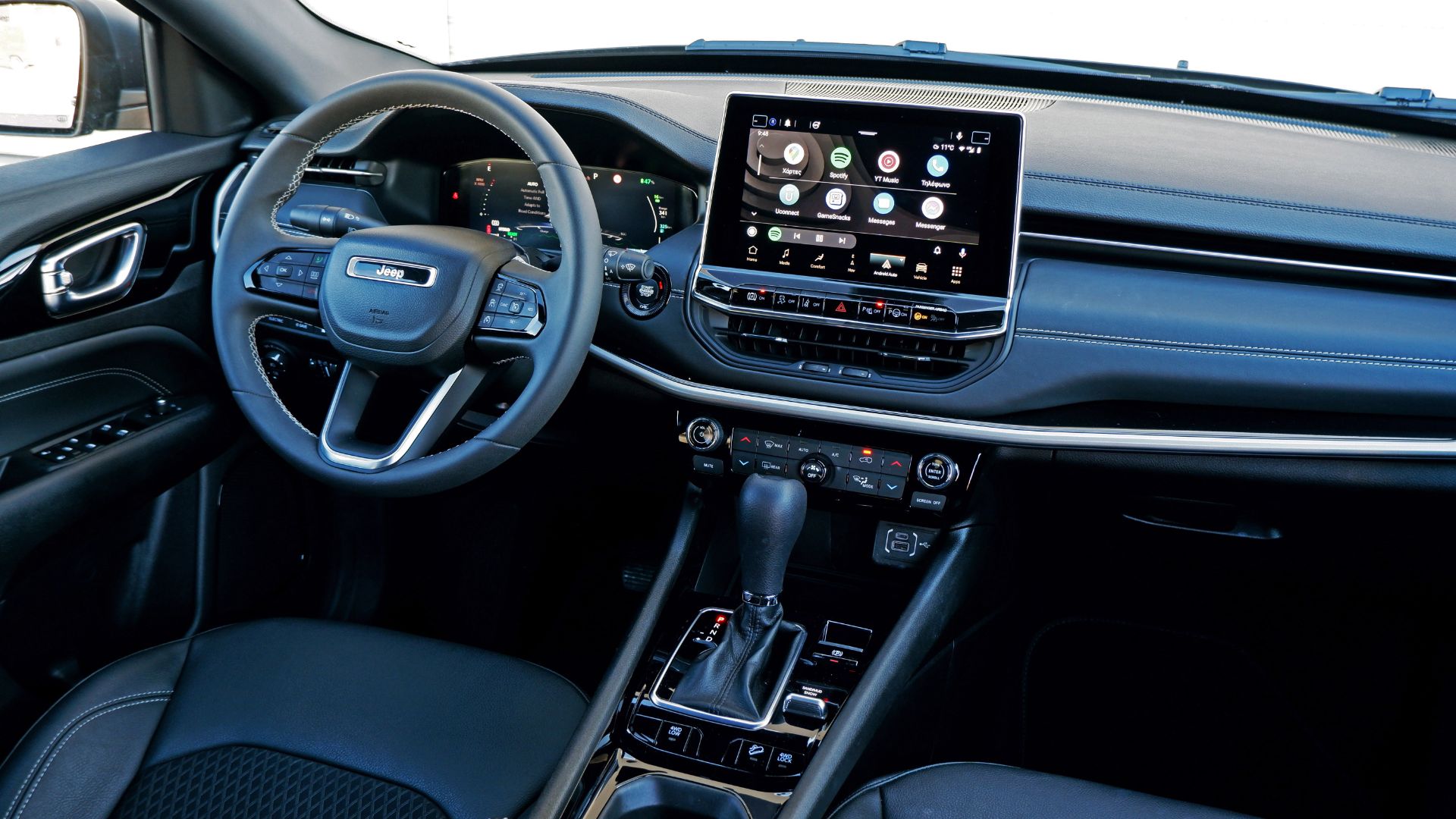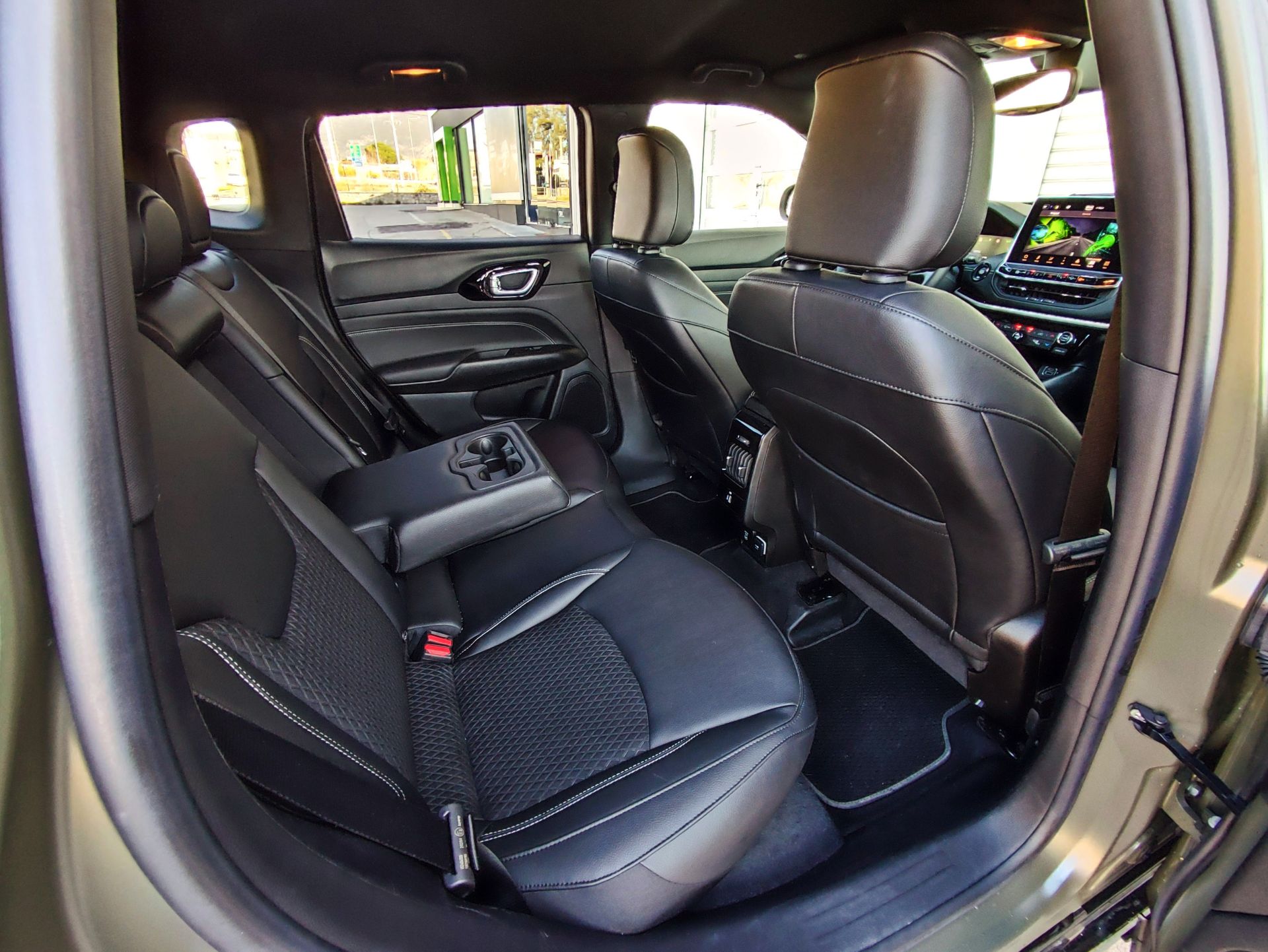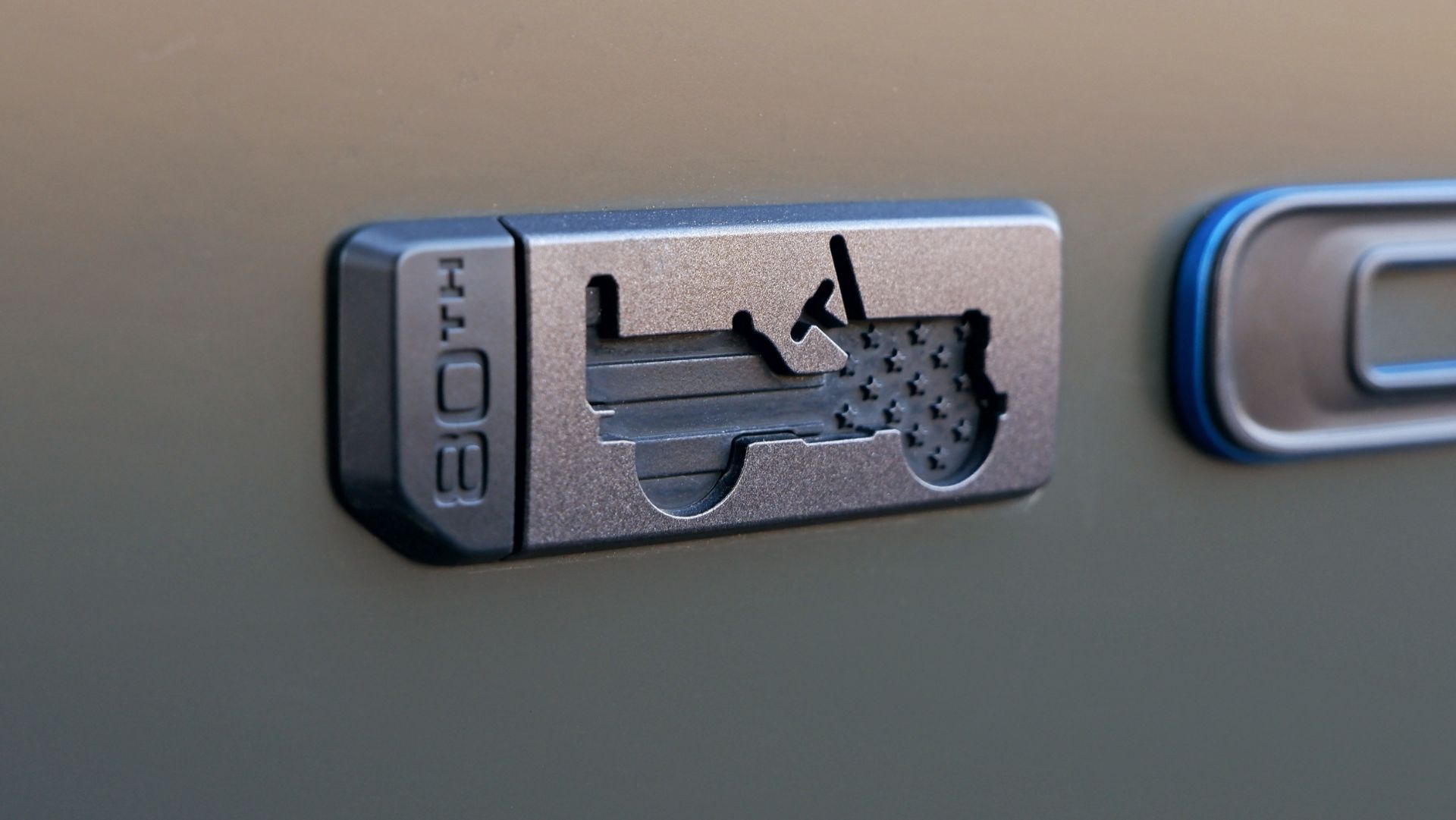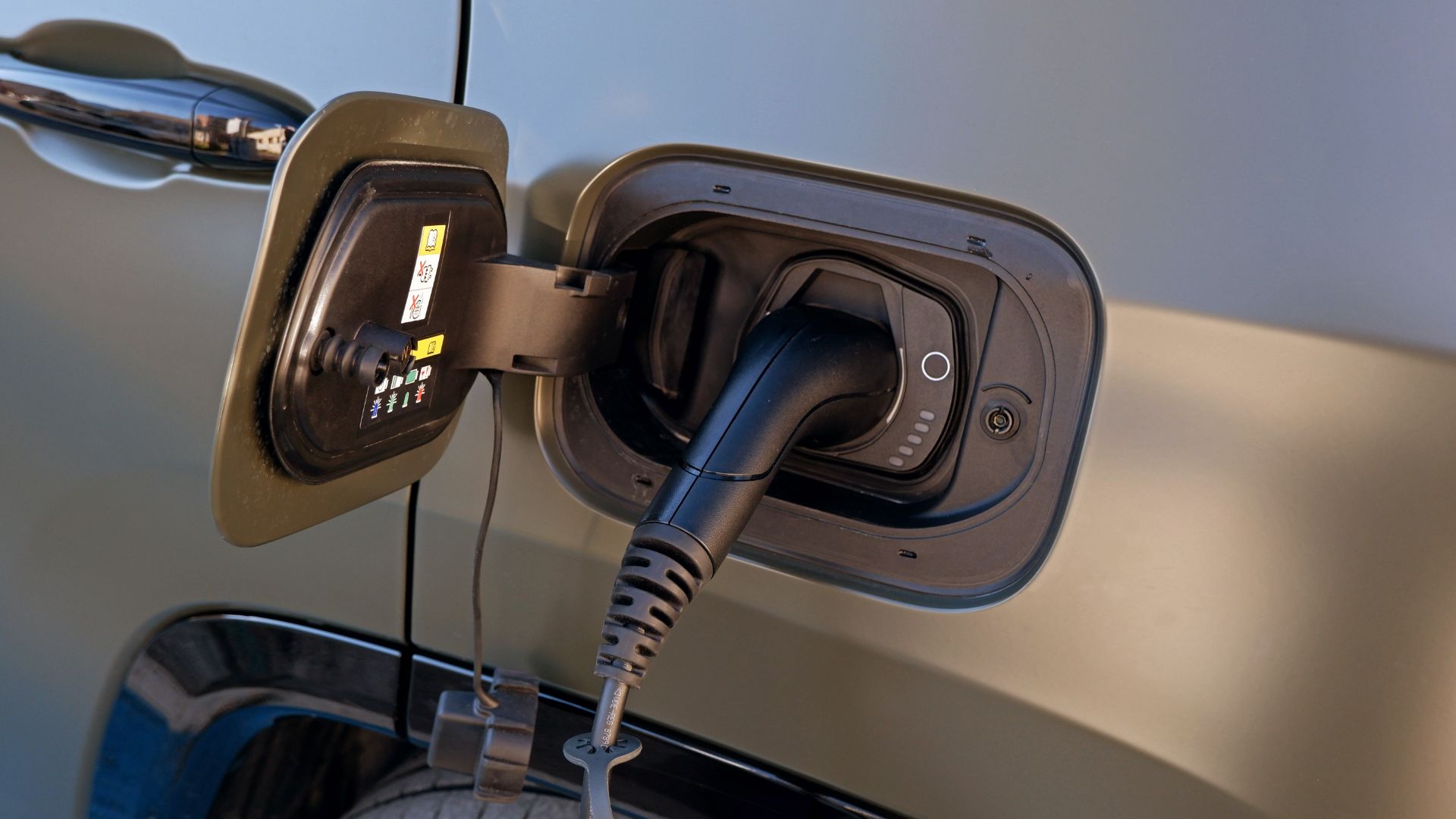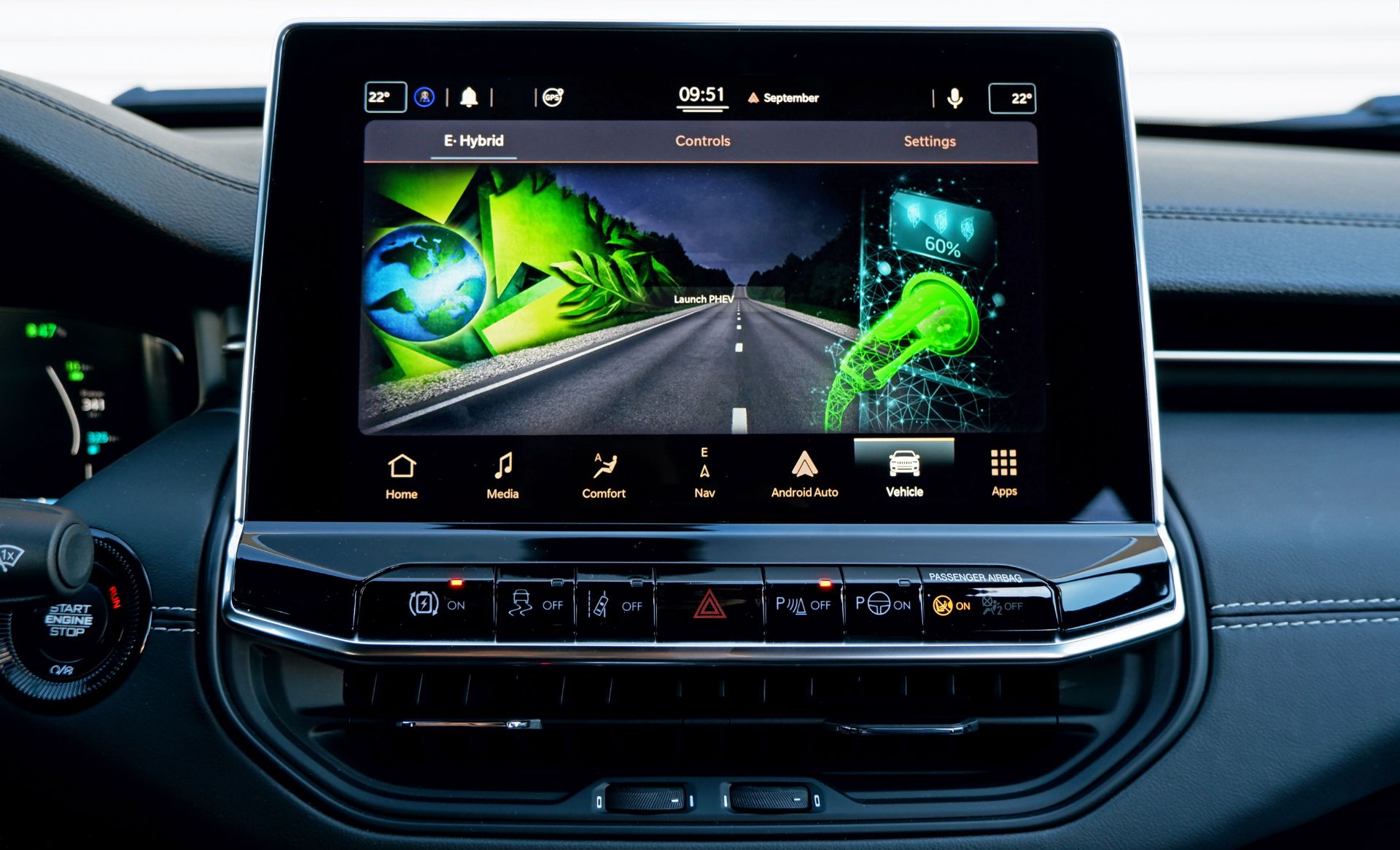Until the fully electric era comes, plug-in hybrids are the new norm and Jeep was more than happy to join the game which helps in achieving lower emissions targets. The Compass, in its second generation since 2016, was the first to introduce a 4Xe variant in 2020 together with the smaller Renegade.
The 4Xe badge has since expanded to the entire Jeep lineup including the Grand Cherokee, thus couldn’t be missing from the facelifted EU-spec Compass range that debuted in 2021. Last week, we got our hands on the flagship powertrain variant of Jeep’s compact SUV, driving it around 1,000 km (620 miles) both inside and outside the city to discover the benefits of the plug-in hybrid system.
See Also: Jeep Introduces New Renegade And Compass E-Hybrids In Europe
Important visual and technological upgrades in the recent facelift
Jeep designers did a great job in updating the car five years after its debut, with fresh bumpers and lighting units harmoniously blending with the existing bodywork. Only the taillights look a bit dated but overall the Compass got more imposing than ever before with increased differentiation between trims. The 80th Anniversary we drove came with a cool set of 19-inch rims, a military-style Mimetic Green paintjob, and the iconic silhouette of the Jeep Willys appearing in various places. The plug-in hybrid variants are distinguished further by the blue accents on the Jeep emblems and the 4Xe logo at the back.
Measuring 4,404 mm (173.4 inches) long, 1,874 mm (73.8 inches) wide, and 1,694 mm (66.7 inches) tall, the Compass is one of the most compact models in the C-SUV segment. That however doesn’t translate into less interior space. The cabin is roomy with plenty of legroom and headroom for the rear passengers although the middle one will squeeze a bit more than in a Citroen C5 Aircross. In terms of practicality, you get four cup holders, four USB slots, small door pockets, and a medium-sized storage compartment on the center console. Even though the addition of the PHEV system steals only 18 lt (0.6 cubic feet) from the boot, the total capacity of 420 lt (14.8 cubic feet) feels quite limited for the vehicle’s size, especially if you opt for the useful but space-consuming full-size spare wheel.
See Also: 2022 Jeep Compass Launched In U.S. Spec At Chicago Auto Show
The redesigned dashboard is a welcome update since it looks more modern, technologically advanced, and premium compared to its predecessor. The fast-responding 10.1-inch infotainment has crisp graphics and a straightforward menu that is very easy to navigate. The wireless Android Auto and Apple CarPlay work flawlessly providing a top-notch connectivity experience. On the other hand, the smooth-running 10.25-inch digital instrument cluster could offer more variety in layout configuration options. Build quality is good but not excellent, with a few noises from the plastics towards the rear when driving over bumps. The media controls mounted behind the steering wheel are easy to use but the buttons at the front have a plastic feel and sound.
Since the facelift, the Compass has inherited Level 2 autonomous features with the adaptive cruise control and the lane centering functions being reliable, although the forward collision alert can be overly sensitive at times, prompting the driver to brake with beeps and signals earlier than necessary. Speaking of beeping sounds, they can get annoying in the Compass, with the signal for seatbelts and open doors being somewhat unnecessary when the vehicle is stationary.
4Xe means PHEV in the Jeep way
The plug-in hybrid powertrain is available in two different outputs – with 187 hp (140 kW / 190 PS) and 237 hp (177 kW / 240 PS) respectively – which is slightly less than what you get from the rival PHEV C-SUVs of the Stellantis Group (Peugeot 3008, Citroen C5 Aircross, DS 7 Crossback, Opel/Vauxhall Grandland). The good thing though is that thanks to the rear-mounted electric motor, both 4Xe variants are driving all four wheels, making them the only non-FWD options in the European range.
The electric 4WD system with lock and low functions increases the off-road potential of the Compass, and the Jeep Selec-Terrain settings (Sport, Auto, Snow, Sand/Mud, plus Rock in the Trailhawk) proved to be helpful in more challenging situations like some muddy gravel roads we encountered. Having said that, the tarmac-focused low-profile 235/45 R19 Goodyear Eagle F1 tires of our 80th Anniversary held us back from exploring the SUV’s full potential. We guess that the gripier rubber and underbody protection of the Traihawk will be more suitable to off-road adventures. It is nice of Jeep to retain this option even though the vast majority of SUV buyers do not leave the tarmac.
Civilized road manners
The suspension setup is well thought out and while the ride is not as plush as in some rivals, the Compass is comfortable enough even with low-profile tires and it doesn’t have the body roll you would expect on tight corners. It feels sturdy on the highway and keeps its composure when you push it on B-roads without pretending to be a sportscar. The steering is very light, but also direct for the standards of the segment, although we would love to have an easy-to-reach button for disabling the lane-keeping assist. The brakes are strong, consistent, and very easy to get used to from the very first drive.
Despite the increased weight of 1,860 kg (4,101 pounds), performance was more than adequate. On paper, the Compass is slower than some of its PHEV rivals, accelerating from 0-100 km/h (0-62 mph) in 7.3 seconds with a top speed of 200 km/h (124 mph). Indeed, acceleration from a full stop is not as impressive as you would expect from the combined power figure, but the SUV gets going in the 60-130 km/h (37-81 mph) spectrum, where the PHEV powertrain releases its full potential, allowing very quick overtaking maneuvers.
As is the case with most complex powertrains, power delivery is not as direct as in an ICE-only or EV-only model, with the noise/revs not always on par with the performance. In the default Auto setting, the six-speed torque converter gearbox works fine most of the time but when you push it needs time to adjust to the driver’s behavior. Sport mode makes a noticeable difference in responsiveness, but it keeps the turbocharged 1.3-liter engine in high revs making it too noisy while unleashing the full power of the electric motor prioritizing performance over economy.
Multiple personalities
The Electric mode turns the Compass into a quiet rear-wheel-drive EV that is agile without offering the blistering fast Tesla-like acceleration. In real-life conditions you will easily get 40-45 km (25-28 miles) of electric range, making the gas tank obsolete for most of your daily commutes. What is missing is a one-pedal driving mode with more intense regenerative braking which feels too mild on the 4Xe. A full charge of the 11.4 kWh battery takes 1 hour and 40 minutes on a charger, or around 4 hours on the standard home plug.
Read Also: Jeep And Chrysler Plug-In Hybrids Can Charge Faster Than Ever At Home Now
Driving the Compass on the default Hybrid mode you’ll see an average fuel consumption between 8.5 lt/100 km (27.7 mpg) and 9.5 lt/100km (24.8 mpg), which is not bad for its weight and size. Burning gas in order to sustain or charge your plug-in hybrid doesn’t sound like a great idea, but it makes sense to use the dedicated E-Save mode on the highway in order to increase your EV range in the city where it is the most efficient.
A serious drawback that applies to most PHEVs is the limited combined range. In the Compass 4Xe, the gas tank has a smaller capacity of 36.5 lt (9.6 gallons) compared to the 55-60 lt (14.5-15.9 gallons) of its ICE-only siblings. This means that with a fully charged battery and a full tank you will be able to drive for only 360 km (225 miles) before you need a refill, which is less than some EVs, although refueling time will always be quicker and more accessible than a charge.
Read Also: What Happens When You Drive A PHEV Without Gas?
Pricing and availability
In Greece, where we drove the Compass 4Xe, it currently starts from €42,900 ($49,080) for the base Longitude trim with 187 hp (140 kW / 190 PS) and goes up to €49,977 ($57,191) for the off-road focused Trailhawk and the sporty-looking S trims with 237 hp (177 kW / 240 PS). As for the 80th anniversary press car we drove, it was listed for €46,900 ($53,670) as tested. In the UK market, only the flagship variants of the Compass 4Xe are available at the moment, exclusively with the more powerful PHEV powertrain, and the Trailhawk is priced at £39,895 ($54,285) and the S at £40,895 ($55,649).
Generally speaking, the Compass 4Xe is fairly priced for a 4WD PHEV SUV with a long list of standard equipment. Indeed, it is significantly cheaper than the equivalent Peugeot 3008 Hybrid4, but more expensive than the FWD-only Ford Kuga PHEV and VW Tiguan eHybrid. Higher trims though get into the territory of more premium rivals including the BMW X1 xDrive25e, the Volvo XC40 T5 Recharge, and the Audi Q3 45 TFSI e, making it a tough choice.
While the Compass 4Xe is a Europe-only affair, it would make sense for Jeep to bring it to the US market as well. However, this seems unlikely; we reached out to Jeep North America to see if they intend to do so, but they answered that the Compass 4Xe is “market-specific”.
See Also: 2022 Jeep Grand Cherokee Starts At $37,390 And Climbs To $66,660 For Luxurious Summit Reserve
Our verdict on the Jeep Compass 4Xe
The addition of a plug-in hybrid powertrain to the Jeep Compass 4Xe and the recent facelift have given a new breath of life to the model that looks, drives, and feels like a modern SUV. While it is not best-in-class in individual aspects, overall it is a well-rounded proposal with distinctive characteristics adjacent to Jeep’s branding. Its strong points are the design, the four-wheel-drive system, the rear-passenger space, and the equipment. On the other hand, it could have a larger boot and a longer combined range although those are common weaknesses in PHEVs.
If you can live with those, have frequent access to a charger, and enjoy the zero-emission driving capability, then this is the best version of the Compass you can buy in Europe – and the only one with 4WD. Just make sure you select the right trim based on your driving habits, with the Trailhawk being the most compelling option if you intend to use it off the beaten track.








